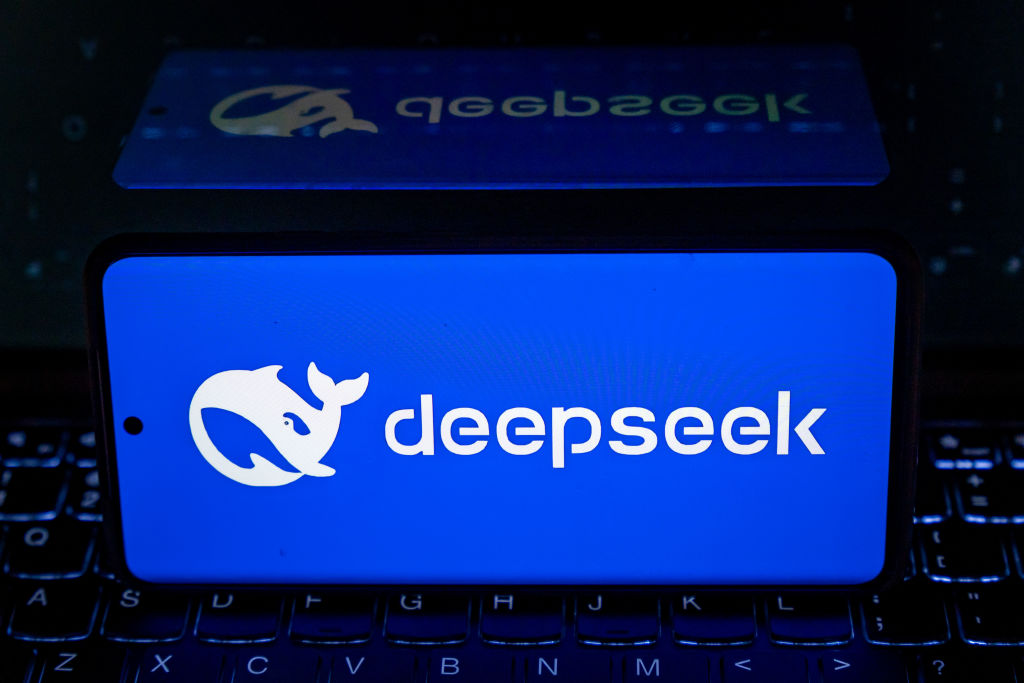BUENOS AIRES— As the battle for dominance in artificial intelligence between the U.S. and China rages on, the emergence of a new player—DeepSeek—is transforming Latin America’s AI future. This Chinese AI chatbot shook global markets upon release because it was developed for a fraction of the cost of high-profile U.S. competitors like OpenAI’s GPT-4 or Google’s Gemini, and operates on far less computing power.
This technological shift marks a true fork in the road for Latin America; DeepSeek could be a powerful tool for self-reliance, or a gateway to a new kind of digital dependence. Though DeepSeek may not yet match the advanced capabilities of GPT-4 or Gemini, it’s a game-changer for countries with limited resources because its use doesn’t require prohibitive infrastructure investments. Specifically, for lower-middle-income countries that often face budget constraints and barriers to accessing advanced technology, it represents an unprecedented opportunity to enhance AI capabilities.
But this opportunity comes with risk. To seize it safely and win AI independence, Latin America needs to start investing today in its own capabilities.
At first glance, DeepSeek does more than democratize AI—it redefines who gets to shape its future. Enabling resource-scarce countries to develop AI applications tailored to strategic sectors, it reduces reliance on foreign tech giants and offers countries the rare opportunity to claim ownership over their own AI ecosystems, weakening the monopoly of U.S. and Chinese firms.
DeepSeek suggests that the future of AI may not be a winner-takes-all contest but rather a delicate equilibrium between multiple, coexisting AI models and standards. If it proves to be as efficient and scalable as projected, it could accelerate the shift toward a more decentralized AI ecosystem where developing economies could shape their own technological futures. Picture a small farmer in rural Colombia, armed with AI-powered weather predictions that save his crops from droughts and floods.
A potential springboard
DeepSeek’s ability to process regional languages like Portuguese and Spanish could empower local AI ecosystems, reducing reliance on English-dominated models. And its efficiency on mid-range hardware challenges the assumption that only nations with abundant, low-cost energy—such as hydro-rich Brazil or oil and gas-producing Argentina—can develop domestic AI ecosystems. Instead, countries with moderate energy costs but strong digital infrastructure, such as Mexico and Colombia, could emerge as competitive AI hubs by skirting the high costs of power-intensive GPU clusters.
In Latin America, AI innovation is not starting from scratch. In Brazil, institutions like Fiocruz are already developing AI-driven solutions for the agriculture sector to boost yields through precision farming, while in Argentina, PROMETEA, an AI system developed by the public prosecutor’s office, is automating legal document processing and expediting judicial decisions. DeepSeek’s efficiency could supercharge these efforts, while revolutionizing sectors like health care, where AI-powered diagnostics could bridge gaps in rural areas.
New capabilities could supercharge efforts already underway to deploy AI and similar technologies, including initiatives to reduce operational costs and environmental impact in Chile’s mining giant Codelco; track deforestation, water usage, and urban expansion with satellite-based environmental monitoring in Mexico; and enhance financial inclusion by providing alternative credit scoring and financial services to micro-entrepreneurs who lack access to traditional banking as Colombia’s Quipu does. Chile also just announced a major step forward: its Latam GPT project, a public, open and inclusive large language model (LLM) set to launch in June 2025.
A potential Trojan horse
DeepSeek isn’t just a technological breakthrough—it’s also a geopolitical gambit.
Developed by a team of Chinese researchers and backed by state-linked institutions, it is part of China’s push to embed its AI infrastructure in developing nations, strengthen digital ties and reshape global AI governance beyond Western influence. While the U.S. pursues ever-more-powerful models, China’s strategy involves AI diplomacy, hoping to shape the future of digital sovereignty on its own terms. Playing along carries risks as well as benefits for Latin America.
LAC countries, which have traditionally relied on Western technologies while facing access barriers to high-end hardware, should not be merely passive spectators. By leveraging this competition, they can negotiate better technology transfer agreements, diversify their AI partnerships, and avoid the risk of single-source dependency, whether on Silicon Valley or Beijing. Semiconductors remain a major bottleneck, as global supply chains continue to be shaped by geopolitical maneuvering.
Breaking free from U.S. tech dominance doesn’t mean escaping risk. Instead, it just shifts the danger elsewhere. While DeepSeek offers a path to greater AI accessibility, Latin American nations must assess the hidden costs of adoption.
If DeepSeek’s backbone is controlled by Chinese firms, Latin America may not own the data it produces using the model and may simply supply raw material for Beijing’s AI ambitions. And AI models are only as unbiased as the data they consume. If DeepSeek is trained primarily on Chinese datasets, a Latin American AI based on it may not reflect its own people’s culture and values, reinforcing instead a foreign worldview. A region that doesn’t train its own AI risks being misrepresented by algorithms designed elsewhere.
Moreover, AI dependence is a potential weapon. We’ve seen how the U.S. used semiconductor sanctions to curb China’s AI growth. Latin America could face similar restrictions if it relies too heavily on Chinese-built AI infrastructure.
Ultimately, the future may be defined not by a single dominant technology, but by a range of competing—and even complementary—standards that play off each other, with DeepSeek serving as a preview of this competitive landscape.
Regardless of how this balance evolves, Latin American governments must do their homework by demanding transparency in AI partnerships, building local capacity for model training, and diversifying AI collaborations to prevent merely swapping one form of technological dependence for another.
A to-do list
Public-private AI investment in the region isn’t optional—it’s the price of staying competitive. Without it, Latin American startups will struggle to scale, leaving AI innovation in the hands of foreign firms. Governments must step up, creating AI investment funds that fuel homegrown breakthroughs in agriculture, health care, and finance before another tech revolution passes the region by.
Latin America is home to world-class AI research groups like Brazil’s CPQD, Argentina’s CONICET, and Chile’s AI & Data Science Lab. But without ambitious investment in AI education and incentives for homegrown innovation, its best minds will keep fueling foreign tech giants instead of building Latin America’s AI future.
Some nations have already made progress, per Uruguay’s Plan Ceibal or Colombia’s government-backed AI boot camps. But much more should be done. Governments must expand AI training programs, fund university partnerships with AI startups, and incentivize AI entrepreneurship to prevent brain drain. AI-focused research centers and innovation hubs should be formed to develop localized applications that address regional needs.
Meanwhile, regional alliances—Mercosur, CELAC, the Pacific Alliance—can supply leverage in demanding fair AI access, stronger technology transfers, and safeguards against digital dependence. A fragmented approach will leave each country vulnerable to the terms of global AI superpowers. Latin American nations must enact data sovereignty regulations to ensure that AI models trained on local data remain under regional control, rather than feeding into foreign-owned infrastructures.
Without bold action, Latin America risks remaining a passive consumer in a game controlled by foreign powers. The time to invest in homegrown AI capabilities, forge regional alliances, and demand transparency is now—before the next wave of AI innovation leaves the region behind.
The question is not whether AI will reshape the region, but who will be in control when it does.
*(The authors acknowledge the assistance of DeepSeek and ChatGPT in the preparation of this piece.)







